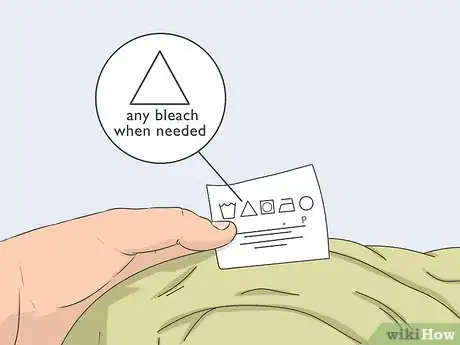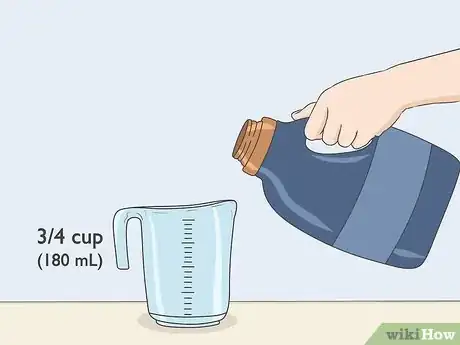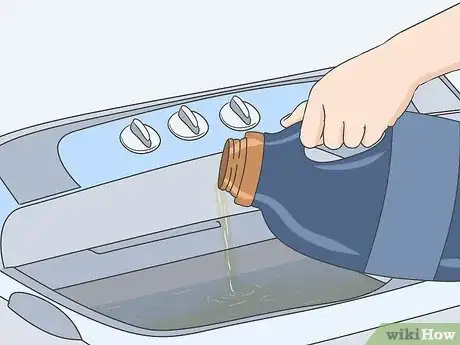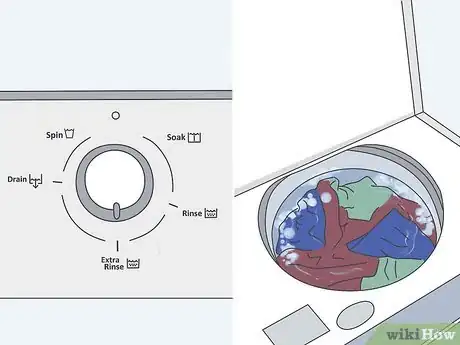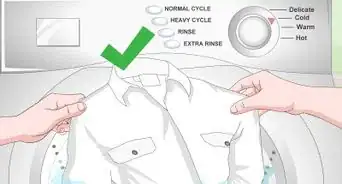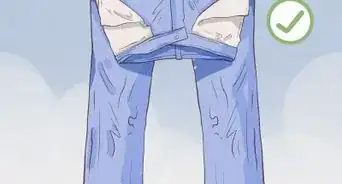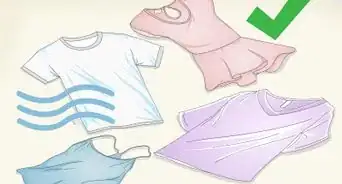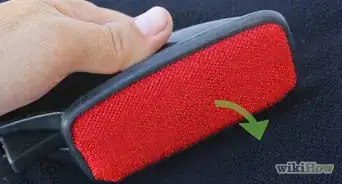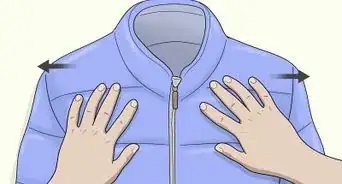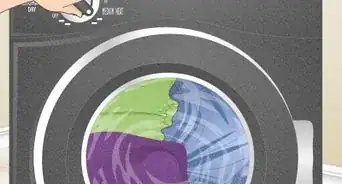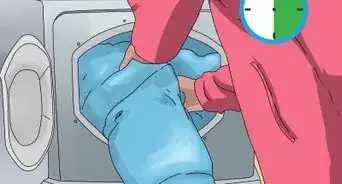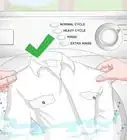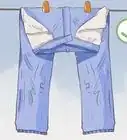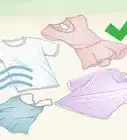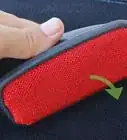This article was co-authored by Robert Shapiro. Robert Shapiro is a Laundry Specialist and the General Manager at Milt & Edie's Drycleaners & Tailoring Center in Burbank, California. With more than a decade of experience, he specializes in dry cleaning, stain removal, tailoring, alterations, and green and eco-friendly cleaning processes. Robert has also been featured in publications such as Cleaner and Launderer Magazine.
There are 9 references cited in this article, which can be found at the bottom of the page.
This article has been viewed 91,402 times.
Bleach can get stubborn stains out of your clothes and brighten colors and whites. However, it's important to make sure that you use the correct bleach and that your clothes are bleach-safe. For colored clothing, use non-chlorine bleach, also known as oxygen or color-safe bleach. Take care to wash dark and light clothes separately and use the correct settings for your clothes. When you're done, they will look as good as new!
Steps
Choosing and Testing Bleach
-
1Check the care tag on your clothes to see if they can safely be bleached. Take a look at the label on the clothes you want to bleach. Look for a triangle with an open center to indicate that you can use regular bleach, or a triangle with 2 diagonal stripes in the center to indicate that you should use non-chlorine bleach. If your clothes can't be bleached, there will be a triangle with an X through it on the tag.[1]
- Almost all colored clothes will indicate that you should use non-chlorine bleach.
- Some clothes will not be safe to bleach with any type of bleach.
- Avoid using bleach on acetates, silk, spandex, and wool.
-
2Use color-fast bleach to get rid of hard-to-remove stains. When you are buying bleach, be sure to look for color-fast bleach that is safe to use on colored clothes. Color-fast bleach is also called non-chlorine bleach or oxygen bleach.[2]
- Avoid using chlorine bleach for colored clothing, since it lifts color from fabric and causes fading and white stains on your clothes.
- There are different types of bleach.[3]
- You can use an all-color bleach.
- You can also use bleaches to remove a transfer dye. For example, if you wash a white shirt with a maroon shirt, and the maroon happens to bleed onto the white shirt. You can use bleach to remove it.[4]
Advertisement -
3Test bleach on an inconspicuous patch if you are worried about damage. Apply one drop of non-chlorine bleach to a spot on your clothes that will be hidden when you wear them. Wait for 3 minutes and then rinse out the bleach with water. If the clothes change color, they are not bleach-safe.[5]
- If your clothes don't have tags that tell you if they are bleach-safe, test the bleach first.
Using Non-Chlorine Bleach in the Washing Machine
-
1Separate dark and light clothes. Dark and light clothes should never be washed together because the dye from the dark clothes can stain the light fabric. It's especially important to keep darks and lights separate when you're working with bleach, since the bleach will affect the fabrics differently.[6]
-
2Pretreat stained garments with diluted non-chlorine bleach. Dissolve a capful of non-chlorine bleach in a bucket or large bowl of hot water. Soak your stained clothes in the bleach and water solution for at least an hour and as long as overnight. This method is best for sweat stains.[7]
- To get rid of stiffness from bleaching, scrub your clothes with a laundry brush periodically while they soak.
-
3Load the separated items into the washing machine. Don't exceed your machine's recommended load size to ensure everything gets cleaned properly. Be sure to evenly distribute the clothing in the drum if you have a top-loading machine.
-
4Put the washing machine on the correct settings for your clothes. Wash your clothes according to the instructions on the tag. For example, your clothes might need to be washed in cold water on a delicate cycle. Follow the instructions carefully so that you don't damage your clothes.[8]
- If your clothes can be washed in hot water, use the hottest possible setting. Bleach is most effective when the water's temperature is around 130 °F (54 °C).
-
5Follow the directions on the bleach bottle for how much to use. In most cases, you will use 3⁄4 cup (180 mL) of non-chlorine bleach for a full load of laundry. If you are only washing a few items, use less bleach.[9]
- For a heavily soiled load of laundry, you may need to use more bleach.
-
6Pour non-chlorine bleach into the designated space in the machine. Never pour bleach directly onto your clothes. Most washing machines have an automatic bleach dispenser that will release the bleach at the right time.[10]
- If there isn't a bleach dispenser in your washing machine, add the bleach 5 minutes into the wash cycle.
-
7Add laundry detergent to the machine and start the cycle. You still need to use your regular detergent with the non-chlorine bleach. Measure out the amount recommended on the packaging for your load size. Then, add the detergent to the dispenser.
- If your machine doesn't have a laundry detergent dispenser, add the detergent directly to the washing machine drum.
-
8Run an extra rinse cycle to get rid of the bleach smell. After you've washed your clothes with bleach, they might smell strongly chemical. Running the clothes through another rinse cycle should be enough to get rid of the smell.[11]
Things You'll Need
- Non-chlorine bleach
- Laundry brush (optional)
- Hot water
- Laundry detergent
- Washing machine
Warnings
- Don't overload the washer when bleaching your clothes.⧼thumbs_response⧽
References
- ↑ https://www.makelifelovely.com/tips-tricks-bleach-clothes/#
- ↑ https://waterandhealth.org/disinfect/preventing-infection/how-to-clean-and-sanitize-laundry-to-help-prevent-the-spread-of-pathogens/
- ↑ https://www.differencebetween.com/difference-between-oxygen-bleach-and-chlorine-bleach/
- ↑ https://www.getsetclean.in/in/en/laundry/how-to-remove-colour-stains-from-your-clothes.html
- ↑ https://www.whowhatwear.com/how-to-bleach-clothes/slide2
- ↑ https://www.goodhousekeeping.com/home/cleaning/tips/a20811/bleach-colored-towel-may02/
- ↑ https://www.nytimes.com/2018/06/30/smarter-living/mutard-ketchup-berry-dirt-grass-sweat-stains.html
- ↑ https://www.whowhatwear.com/how-to-bleach-clothes/slide5
- ↑ https://waterandhealth.org/disinfect/preventing-infection/how-to-clean-and-sanitize-laundry-to-help-prevent-the-spread-of-pathogens/
